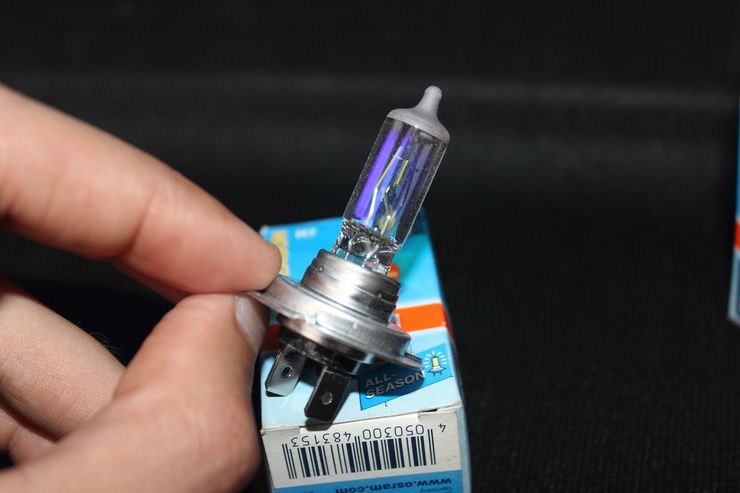Why do the lamps in the car suddenly start to burn out regularly and often
- March 10, 2023
- 0
It is not surprising that halogen headlights burn out. Every car enthusiast has experienced this. If in a few years you had to replace one or two pieces,
It is not surprising that halogen headlights burn out. Every car enthusiast has experienced this. If in a few years you had to replace one or two pieces,

Usually in such cases they say that the owners themselves are to blame. For example, work on the replacement must be carried out with gloves. Otherwise, greasy fingerprints on the glass and base will quickly disable the lamp. This can indeed happen, but it is extremely rare. We mean a more complex problem, when an expensive Philips or Bosch “lives” as long as a cheap Chinese boat with no name – 2-3 weeks.
First you need to inspect the block headlights and rear optics. For example, if a small crack is noticed in the body of the lantern, then moisture and dust will get through. Here’s the first (simplest) cause of problems.
Let’s not forget that, for example, block headlights can also fog up from the inside in a new car. A small amount of moisture is acceptable and absolutely normal. But if problems arise from this, then the valve with the membrane is faulty or the air vents of this headlight are clogged with something: you need to go to the service.
And what to do if consumables are regularly replaced in several lighting fixtures at once? It is necessary to measure the on-board voltage in the electrical circuit. If the relay regulator on the generator is faulty, then instead of 13.5-14.5 V there may be 15-16 V in the network. Such a high voltage literally burns the filament of absolutely all “halogens”. Branded products last longer, but the result is the same – the driver goes to the store every 2-3 weeks for new consumables.
If we are talking about more modern cars, then the electronic control unit controls the lighting there. It also gives a signal which voltage should be applied to a particular lamp. If the device breaks down, simply replacing penny parts will no longer suffice. You must go to the service to diagnose or replace the node.
Finally, the oxides on the contacts also contribute. It seems that in this case the resistance increases, that is, the voltage in the lamp decreases. That is, it should “live” longer. However, the contact becomes unstable and this is very bad for the filament.

Usually in such cases they say that the owners themselves are to blame. For example, work on the replacement must be carried out with gloves. Otherwise, greasy fingerprints on the glass and base will quickly disable the lamp. This can indeed happen, but it is extremely rare. We mean a more complex problem, when an expensive Philips or Bosch “lives” as long as a cheap Chinese boat with no name – 2-3 weeks.
First you need to inspect the block headlights and rear optics. For example, if a small crack is noticed in the body of the lantern, then moisture and dust will get through. Here’s the first (simplest) cause of problems.
Let’s not forget that, for example, block headlights can also fog up from the inside in a new car. A small amount of moisture is acceptable and absolutely normal. But if problems arise from this, then the valve with the membrane is faulty or the air vents of this headlight are clogged with something: you need to go to the service.
And what to do if consumables are regularly replaced in several lighting fixtures at once? It is necessary to measure the on-board voltage in the electrical circuit. If the relay regulator on the generator is faulty, then instead of 13.5-14.5 V there may be 15-16 V in the network. Such a high voltage literally burns the filament of absolutely all “halogens”. Branded products last longer, but the result is the same – the driver goes to the store every 2-3 weeks for new consumables.
If we are talking about more modern cars, then the electronic control unit controls the lighting there. It also gives a signal which voltage should be applied to a particular lamp. If the device breaks down, simply replacing penny parts will no longer suffice. You must go to the service to diagnose or replace the node.
Finally, the oxides on the contacts also contribute. It seems that in this case the resistance increases, that is, the voltage in the lamp decreases. That is, it should “live” longer. However, the contact becomes unstable and this is very bad for the filament.
Source: Avto Vzglyad
Donald Salinas is an experienced automobile journalist and writer for Div Bracket. He brings his readers the latest news and developments from the world of automobiles, offering a unique and knowledgeable perspective on the latest trends and innovations in the automotive industry.